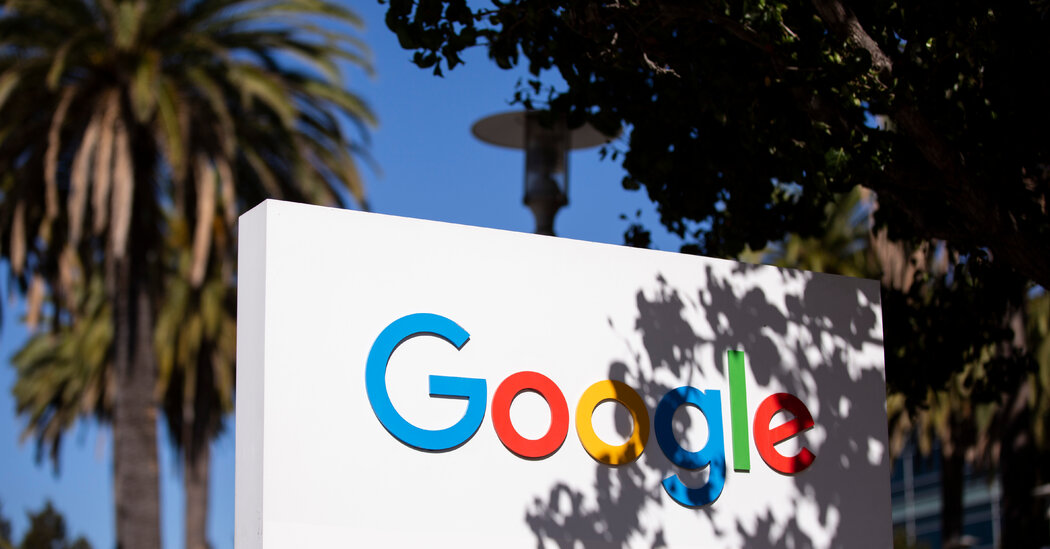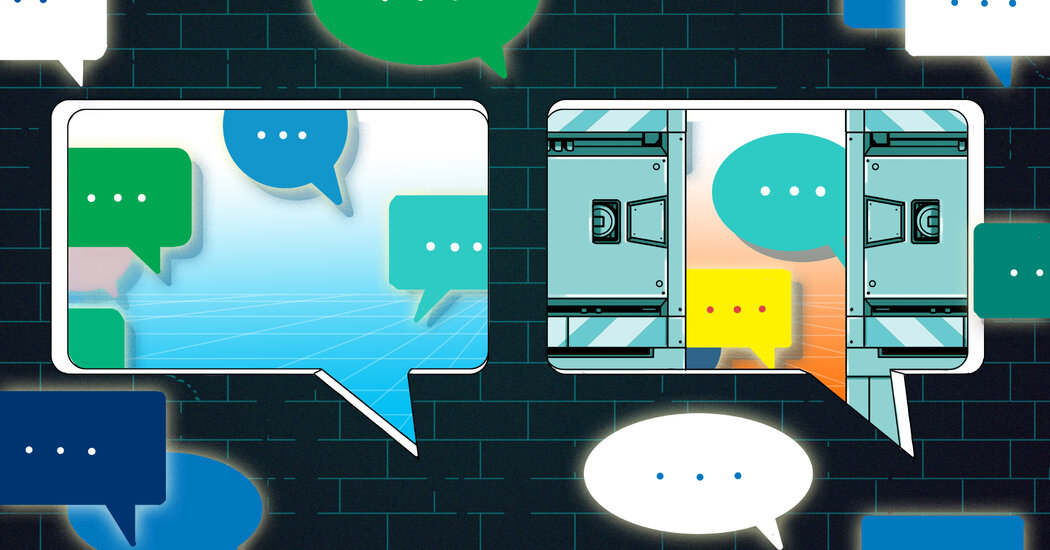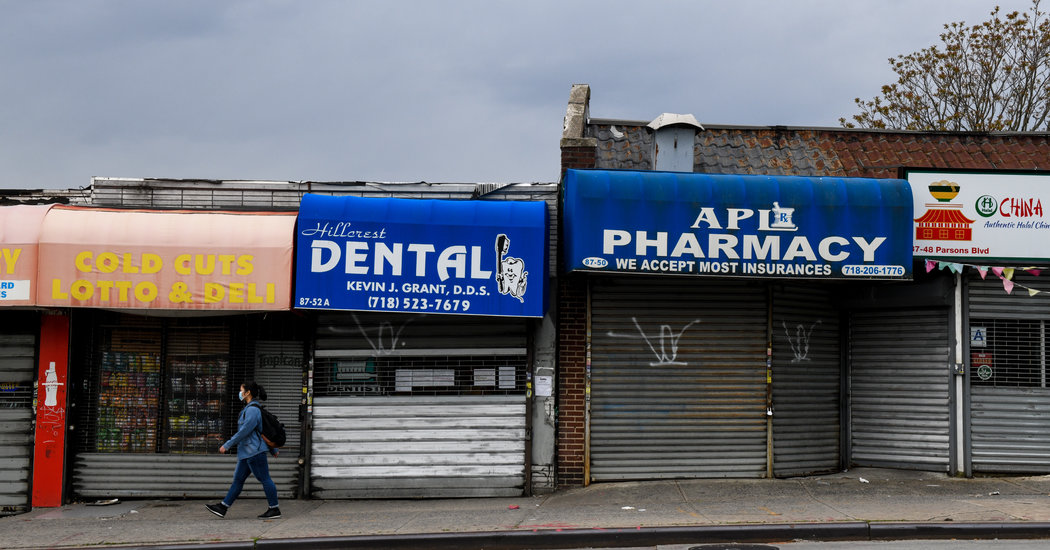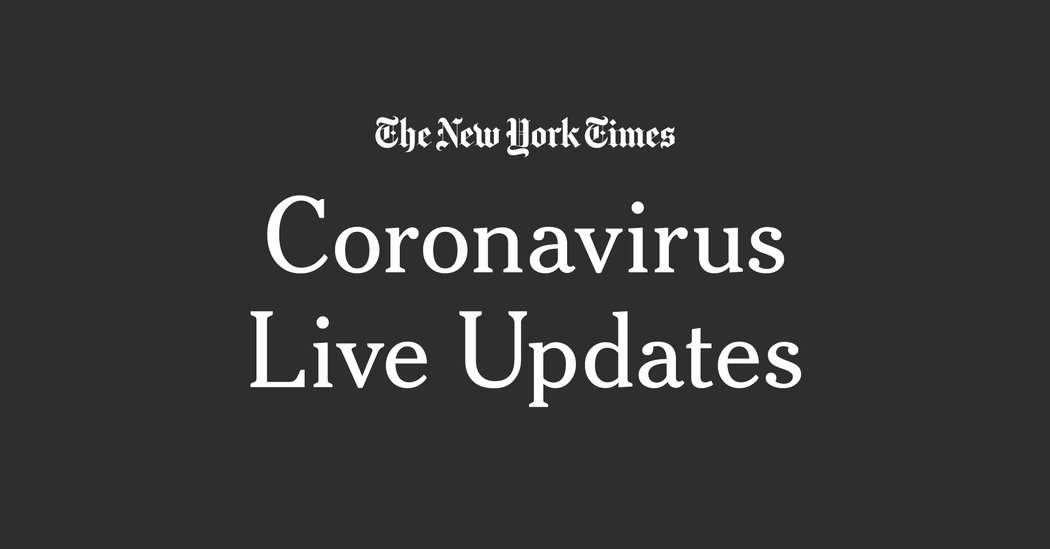Daily Business Briefing
July 23, 2021, 11:15 p.m. ET
July 23, 2021, 11:15 p.m. ET
The Federal Trade Commission on Friday asked a federal judge to give it more time to refile an antitrust suit against Facebook that is the agency’s biggest test in reining in the power of big tech.
In a filing with the U.S. District Court for the District of Columbia, the agency asked for a three-week extension, or until Aug. 19, to amend a lawsuit that the court dismissed last month. The F.T.C. said in its request that it had reached an agreement with Facebook over the proposed extension.
Last month, Judge James E. Boasberg of the federal court knocked down a core argument made by the F.T.C., saying prosecutors had failed to provide enough persuasive facts to back up the claim — that Facebook holds a monopoly over social networking. But the judge gave the F.T.C. a 30-day window to refile its lawsuit.
The new lawsuit will be the first major action by Lina Khan, the new chair of the F.T.C. and a critic of Facebook, Google and Amazon who has advocated for the breakup of the digital platforms.
Wall Street notched a fresh record on Friday as a number of strong corporate earnings reports helped investors overcome worries about the rapidly spreading Delta variant of the coronavirus.
The S&P 500 and the tech-heavy Nasdaq Composite both crossed into record territory, with gains of 1 percent.
Tech stocks such as Facebook and Alphabet, the parent company of Google, led the gains, as investors took strong corporate profits from Twitter and Snap as a reason to expect similar results from other tech giants next week. Twitter rose 3.1 percent on Friday, and Snap gained 23.3 percent. Facebook climbed 5.3 percent, while Alphabet rose 3.6 percent.
The parade of second-quarter results, which began earlier this month, has been supportive for stocks for a simple reason: Companies are making more money than Wall Street analysts expected, even after accounting for the easy comparisons with last year, when earnings cratered during the worst of the Covid shutdowns.
So far, roughly 86 percent of the S&P 500 companies that have reported second-quarter results have beat the expectations of Wall Street analysts. (It’s true that companies do often beat expectations, but during a typical quarter, the share of better-than-expected results is closer to 75 percent.)
Those profits — and the fact that many companies are raising the guidance they give analysts about what to expect for the remainder of the year — have helped stocks overcome their brief crisis of confidence earlier this week.
On Monday, the S&P 500 had its worst drop since May, on growing concerns about the Delta variant. But it has steadily climbed since and ended the week with a gain of 2 percent. The Nasdaq composite rose 2.8 percent for the week.
Stocks in Europe were also higher on Friday after a new survey showed the pace of expansion of business activity in the eurozone hit a 21-year high in July. The first reading of the Purchasing Managers’ Index rose to 60.6, up from 59.5 the previous month.
Across the region, the services industry got a boost from looser pandemic restrictions and higher vaccination rates that have encouraged tourism.
Manufacturing is still being restrained by shortages of critical products, which is causing input prices to rise. Analysts at IHS Markit, which published the report, also noted that business confidence had slipped to its lowest level since February as the Delta variant continued to spread.
The Stoxx Europe 600 index jumped 1.1 percent, while the FTSE 100 rose 0.9 percent.
General Motors is recalling nearly 51,000 Chevrolet electric cars in the United States whose battery modules have been found to be at risk of catching fire.
The recall covers Chevrolet Bolts from the 2017 to 2019 model years and comes after an earlier recall to add software designed to prevent the cars’ batteries from overheating. Two fires have been reported since the initial recall, including one in a Bolt that had the updated software.
The recalled Bolts use battery packs made in South Korea by LG Chem, a close partner in G.M.’s electric vehicle strategy.
G.M. and LG Chem linked the fires to two manufacturing defects that on rare occasions can be present in cells in the Bolt’s battery pack, the automaker said in a statement. G.M. plans to replace battery modules that have defective cells.
Until replacement modules are available, the company has advised owners to avoid parking the cars in garages or near buildings, and to avoid fully charging the battery packs.
“Experts from G.M. and LG have identified the simultaneous presence of two rare manufacturing defects in the same battery cell as the root cause of battery fires in certain Chevrolet Bolt E.V.s,” the company said. “As part of this recall, G.M. will replace defective battery modules in the recall population. We will notify customers when replacement parts are ready.”
G.M. is moving to ramp up production of electric vehicles. It plans to introduce more than two dozen models in the U.S. market over the next few years, and is building several battery plants in a joint venture with LG. G.M. has said it is hoping sales of electric vehicles will take off and surpass sales of gasoline-powered cars and light trucks within about a decade.
The company has set a goal of ending production of internal combustion vehicles by 2035.
The National Highway Traffic Safety Administration originally opened an investigation into fires involving the Bolt last fall and issued a new alert last week. The original recall was issued in November.

WASHINGTON — The Chinese telecommunications giant Huawei has hired the veteran Democratic lobbyist Tony Podesta as part of an expanded campaign to improve relations with the Biden administration.
Mr. Podesta has deep connections inside the White House, including to President Biden and his close counselor Steve Ricchetti. But Mr. Podesta has been out of lobbying since late 2017, when his $42-million-a-year lobbying and public relations firm collapsed amid a federal investigation that rendered him toxic.
He turned to his vast modern art collection for income, but in recent weeks, he began exploring a return to lobbying, holding talks with prospective clients around the world.
Mr. Podesta signed an agreement with Huawei a couple weeks ago, and this week he signed a deal to represent a Bulgarian energy company seeking to do business with American companies, according to a person familiar with his efforts.
His hiring by Huawei, which was reported by Politico on Friday, comes as the company tries to smooth over tensions with the U.S. government and make inroads into U.S. markets.
Huawei was branded a national security threat by the Trump administration, which argued that the Chinese government could use its communications technology for spying. The company has denied that, but it has suffered from a sustained American campaign to bar it from using U.S. technology and software, and to keep its equipment from being used in new 5G networks around the world.
The company and two of its subsidiaries are also facing federal charges of racketeering and conspiring to steal trade secrets from American companies.
Huawei has hired a number of new lawyers and lobbyists with connections to both parties in recent months, increasing its lobbying spending to more than $1 million in the last three months from $180,000 in the first three months of the year, according to congressional lobbying disclosures.
Huawei did not respond to a request for comment.
Mr. Podesta, 77, was once a dominant figure in Washington, raising millions of dollars for Democratic candidates and party committees, while building his firm, the Podesta Group, into one of the highest-earning shops on K Street.
The firm disintegrated after it became ensnared in one strand of the special counsel’s investigation into President Donald J. Trump, his campaign and its ties to Russia. The firm had taken on a client involved in Ukrainian politics that was linked to two figures central to the investigation: the Republican lobbyists Paul Manafort and Rick Gates, who had worked in Ukraine before joining the Trump campaign.
Mr. Podesta’s firm initially failed to register the work under Justice Department foreign lobbying rules, and investigators spent months looking into the Podesta Group’s work, but ultimately decided not to bring charges.
Mr. Podesta’s return to lobbying is starting off more modestly.
He is working mostly by himself and intends to use the corporate name Podesta.com, the person familiar with his efforts said, in part because the Podesta Group’s email accounts and website were compromised after Chinese cyberthieves launched a wide-ranging phishing campaign using one of his domain names.
He is consulting with a lawyer about whether to disclose his lobbying arrangement with Huawei under congressional lobbying rules or the more detailed Justice Department foreign lobbying rules, the person said.

Amazon has hired a law firm to investigate claims of widespread gender discrimination in part of its cloud computing division, the company said in an email to employees late last week.
The investigation is a response to a petition filed by a group of employees in Amazon Web Services’ Professional Services group, known as ProServ, which helps companies adopt cloud computing. In the petition, the employees alleged gender bias and bullying in the department. The Washington Post, which first reported the investigation, said more than 550 employees had signed the petition.
Adam Selipsky, the new chief executive of AWS, responded with the email, which was addressed to the leaders of the petition.
“We have retained an outside firm to investigate and understand any inappropriate conduct that you or others may have experienced or witnessed,” he wrote. “This firm is experienced and objective, and I personally will review their independent findings, which will help guide any further actions.”
Amazon has been hiring heavily in AWS, which is the largest provider of cloud computing. The industry has largely been dominated by men. About 23 percent of Amazon’s senior leaders are female, company data show.
In May, five women, including one who worked in ProServ, sued the company, accusing it of various forms of racial and gender discrimination, claims the company has denied.

Treasury Secretary Janet L. Yellen warned Congress on Friday that the U.S. economy faced “irreparable harm” if lawmakers failed to raise or suspend the nation’s borrowing cap and that the Treasury Department would begin taking “extraordinary measures” to avoid breaching the so-called debt limit.
In a letter to Congress, Ms. Yellen said that the nation’s debt will hit its statutory limit on Aug. 1 and that it is possible that soon after lawmakers return from their August recess the United States could face the dire prospect of defaulting on its obligations. Urging Congress to act, she recalled that in 2011 the threat of default caused nation’s credit rating to be downgraded.
“Even the threat of failing to meet those obligations has caused detrimental impacts in the past, including the sole credit rating downgrade in the history of the nation in 2011,” Ms. Yellen wrote. “This is why no president or Treasury secretary of either party has ever countenanced even the suggestion of a default on any obligation of the United States.”
Ms. Yellen also warned that the pandemic had made it difficult for the Treasury to predict how long it could delay breaching the debt ceiling given uncertainty around the timing of government payments and tax receipts.
The Treasury often takes what it calls “extraordinary measures” to avoid breaching the debt limit, which is a cap on how much the government can borrow. Those measures include suspending investments of the Exchange Stabilization Fund and suspending the issuing of new securities for the Civil Service Retirement and Disability Fund and the Postal Service Retiree Health Benefits Fund.
The Congressional Budget Office estimated this week that the Treasury Department could run out of cash by October or November.
Ms. Yellen noted that the government was required to make a payment of $150 billion for a Department of Defense-related retirement and health care investment on Oct. 1, which will deplete its cash reserves.
Brinkmanship over the debt limit has become common in Washington. Republicans have traditionally resisted raising or suspending the debt limit when Democrats control the White House. They backed a two-year suspension of the debt limit in 2019 as part of a spending agreement with Democrats while President Donald J. Trump was in office.
Senator Mitch McConnell, the minority leader, suggested this week that Republican senators would not back a debt ceiling increase and that Democrats would have to deal with it on their own.
White House officials said they remained hopeful that lawmakers would work together to avert a debt limit crisis.
“We certainly expect Congress to act in a bipartisan manner as they did three times under the prior administration to raise the debt limit,” Jen Psaki, White House press secretary, said on Friday.
Ms. Yellen said in her letter that suspending or increasing the debt limit did not authorize future spending but, in fact, allowed the Treasury Department to pay for expenses that Congress had already approved.
“The current level of debt reflects the cumulative effect of all prior spending and tax decisions, which have been made by administrations and Congresses of both parties over time,” Ms. Yellen wrote.

The fear that the economic recovery is faltering, in part because of the spread of the Delta variant of the coronavirus, appears to have receded among stock investors.
Bond buyers, though, are still spooked. The yield on 10-year Treasuries has been dropping for months and remains at just under 1.3 percent, near the lowest it has been since February, when the prospects for the economy were much shakier.
The DealBook newsletter asks: Who to believe?
A drop in yields usually signals slower growth ahead, which seems at odds with what’s happening. Yes, the Delta variant has delayed some reopening plans, but the economy generally appears to be expanding rather quickly. Most economists think 2021 growth will be the strongest since the mid-1980s.
10-year U.S. government bond yield
That’s led some Wall Street strategists to conclude that the bond market is broken:
-
The long-held belief that bonds are somehow better able to predict the economy than stocks doesn’t make sense in our current situation, said Vincent Deluard, a global macrostrategist at the institutional brokerage firm StoneX. The Federal Reserve’s pandemic stimulus included a heavy dose of bond buying, distorting the market. And the popularity of target date funds, which balance stocks and bonds based on investors’ projected date of retirement, is also moving bonds for reasons unrelated to the economy. “I find it hard to take seriously that the bond market is saying that we are not going to have inflation and a hot economy,” Mr. Deluard said.
-
There is another possibility: Economic rebounds have been getting successively slower, said Tom Atteberry, who runs the FPA New Income bond fund, one of the most conservative funds around. Growth peaked around 5 percent in the 1990s, 4 percent in the mid-2000s and 3 percent before the pandemic.
The big difference this time is that the government has spent trillions to pull the economy out of a deep recession. What if that masks something fundamentally awry? What if growth has already peaked? What if the new long-term ceiling is even lower than before? Mr. Atteberry considered this, “but then I come back to ‘nah,’” he said. “Rates are going to rise and the economy is going to do a lot better than it is now.”
-
Amazon told customers this week that it would no longer require them to resolve their legal complaints involving the technology giant through arbitration, a significant retreat from a strategy that often helps companies avoid liability. In a brief email to customers, Amazon said anyone using its products would now have to pursue disputes with the company in federal court, rather than go through the private and secretive arbitration process, which critics say puts consumers at a huge disadvantage. The five-sentence note informing Amazon’s customers about its updated “conditions of use” did not explain the reasons for dropping arbitration. When asked about the reasoning, a company spokeswoman did not elaborate.
-
Felicia Sonmez, a Washington Post reporter, filed a discrimination lawsuit against the newspaper and some of its top editors on Wednesday, claiming they had discriminated against her by barring her from covering stories related to sexual assault after she went public as a victim of assault. Ms. Sonmez said in the lawsuit that after she publicly stated in 2018 that she had been assaulted by a fellow journalist while living in Beijing, The Post had barred her from covering Christine Blasey Ford’s sexual misconduct allegations against the Supreme Court nominee Brett Kavanaugh. After an article in Reason magazine on allegations against the journalist came out a year later, Ms. Sonmez said, The Post again subjected her to a coverage ban. She added that her editors had “disciplined” her for publicly requesting a correction to the article.

The rental market, which slumped during the pandemic, has snapped back more quickly than many economists predicted, and renters across the country are facing sticker shock.
Demand for apartments and single-family rentals is rebounding — and even looking hot in some places, Coral Murphy Marcos, Jeanna Smialek and Jim Tankersley report for The New York Times.
If rents continue to take off, it could be bad news both for those seeking housing and for the nation’s inflation outlook. Rental costs play an outsize role in the Consumer Price Index, so a meaningful rise in rent could help keep that closely watched government price gauge, which has picked up sharply, higher for longer.
-
Rents last month rose 7 percent nationally from a year earlier, Zillow data shows. That was measured against a weak June 2020, but the gain was also a robust 1.8 percent from May.
-
Measures of rent and “owners’ equivalent rent” — which uses rental data to try to put a price on how much owners would pay for their housing if they hadn’t bought a home — make up nearly one-third of the Consumer Price Index. Both tend to move slowly, but are defying expectations that they would take time to bounce back.
-
The rental experience diverges across markets. Rents have appreciated rapidly in places like Boise, Idaho; Spokane, Wash.; and Phoenix, while big cities on the coasts have lagged, based on Zillow data. Rents in New York and San Francisco are recovering quickly but remain cheaper than two years ago.
Today in the On Tech newsletter, Shira Ovide writes that it feels as if we’re in the middle of reimagining both what a “video game” is and what online idle time can be — more engaging and social, perhaps, and a little less passive doomscrolling.

















